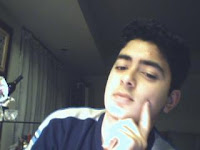
Surgeon: Dr. Yegappan Lakshmanan, M.D., FAAP
Assistant Professor of Urology, Pedraiatrics. Johns Hopkins Medical Institutions
Email:ylaksh@jhmi.edu
James Buchanan Brady Urological Institute, JHMI
Where: Johns Hopkins Outpatient Center Building, OR Center, Johns Hopkins Hospital, Baltimore MD
When: June 12, 2007
ORCHIOPEXY - The left testis had not descended in to the scrotum of a 1 year old boy. The surgery would locate the undescended testis in the abdomen, pass it through the inguinal canal and bring it into the scrotal sac.
Notes:
Everyone knows their place and job - highly specialised.
Dr. Lakshmanan arrived 5 minutes before the surgery and scrubbed in. The Surgical tech had all the sterile tables set up and was ready to go. There was a traveling nurse who also joined us and another nurse on the computer system running monitors.
The environment was highly sterile and everyone had masks on. I introduced myself to Dr. Lakshmanan five minutes before the surgery was scheduled to start and he was very enthusiastic about having me there. He inquired about the summer anatomy program, my undergrad education, where I lived and have lived. He went on to inquire about doctors in the family and I told him about my grandfather, a general practitioner in Hyderabad and my uncle, a Cardiologist in Kanpur. He told me he had completed his medical education from Chennai, India. I inquired about how long he had been practicing and he replied that he had probably been doing surgery for longer than I have lived! All in all, he was very friendly and helpful. We continued to chit-chat for about the next 10 minutes.
We were waiting for the Anesthesiologist t to arrive so we could check in and begin. However the anesthesiologist decided to start in the neighboring OR even though the surgeon for that OR hadn't arrived yet. Dr. Lakshmanan was quite upset at this delay in his schedule and I could sense that this was a man that really valued his time. I figure that inthe busy life of a surgeon, every second is precious. After waiting another long 5 minutes, Dr. Lakshmanan left the OR to inquire about the matter and I started talking to the Chief resident there Dr. Dan M (Unfortunately I didn't catch his last name with his mask on). Dr. Dan explained the reason for the preemptive orchiopexy operation. If the testis doesn't descend into the scrotum, it increases future risk of testicular cancer and infertility. Research on the matter is ongoing as to whether if this operation decreases rate of testicular cancer chances as opposed to those that do not get it done.
The anesthesiologist came in, apologized and pacified Dr. Laksmanan who quickly accepted the apology ( it was apparently the fault of the nurses outside). The doctor quickly returned to his jovial mood and began explaining the details of the operation.In the meantime, the mother came in with the yound child in her lap. Since the OR chambers are a sterile environment even the mother was scrubbed in. The anesthesiologist playfully joked with the boy and made him comfortable. He then coaxed the boy into putting on the inhaling mask through which the anesthetic was passed. The boy began to cry but quited down and his breathing became a little bit heavy. The anesthesiologist explained that was perfectly normal. The mother lay the boy down on the operating table and left the room. The boy was stripped and iodine was applied to the inguinal, umbilical, lumbar and pelvic areas. Sterilised sheets were placed on the boy's upper torso and limbs so only the abdomen and pelvis were visible in a square section.
First Dr. Laxmanan felt around the abdomenal area until he felt a bump which showed where the testis was stuck. He and Dr. Dan then carefully drew a thin line where the incision was to be made.
They then made the incision, going through the epidermis, dermis and fascia layers. They als carefully cut through the exterior oblique muscle's aponeurosis and saw that in fact the testis was being held there by some connective tissue.
They had to take great care in cutting away much of the fascia and tissue around the immediate area while trying to isolate the epidydimis, ductus deferens and femur nerve. They also charted out the path of the inguinal canal through which the testis had to be passed.
They continued to cut and slice away at the tissue and made sure that the oblique muscle fibers connecting to the testis were long enough to reach the scrotal sac. Dr.Laksmanan then showed Dr. Dan how to orient and pass the testis correctly through the inguinal canal. Dr. Dan first held back the testis superiorly out of the way by attaching it to three 'clipping scissors'. then to my amazement he stuck his thumb through the inguinal canal all the way down into the scrotal sac wheere we could see the protrusion of his fingers inside where the testis needed to be. Dr. Laksmanan then marked that area with a pen. They then made an incision there along the line. Then using clipping scissors, they pulled the testis through and oriented them. With 10 minutes remaining in the operation Dr. Laskmanan indicated this to the anesthesiologist who proceeded to change some parameters - I believe in order to slowly cut off the anesthetic.
They cleaned up some loose fibers in the inguinal incision. They then hydrated it and cleaned off the iodine. Dr. Dan completed the stiches and the operation was done. I discussed the operation with Dr. Laksmanan, thanked him for his time and bid adieu.


No comments:
Post a Comment